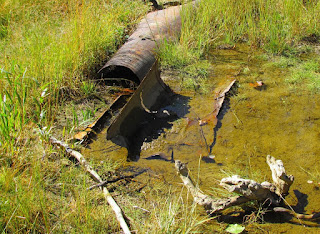A journey into your family history, is often
like opening an old musty
book, filled with forgotten stories, and interesting people.
My
journey didn't start with the musty old book but a place. A place
unlike any other, filled with forgotten stories and yes, interesting people.
The story begins at one of the most beautiful places in Colorado. Along the foot of Mount Princeton, lies
what is left of the
Friskey Ranch, and where my journey into my family history began.

My earliest memories are of spending many summer days at "Gus's Cabin" named for my great uncle Gus
Friskey who built the cabin in about the late
1890's early
1900's. We cooked on a wood burning Majestic wood stove, brought water up from the creek and
basically lived as pioneers. There were no
hand held games or cell phones, well
heck back in that day, there wasn't even the Internet, so we
spent our time playing along the creek, or in the old corrals.

My greatest joy was walking from Gus's Cabin to what we called the "Old House" located a short distance up the road.
There could be found broken pieces of worked flint and if we were
really lucky an arrowhead or two. Definitely evidence of Native American habitation long before it became a ranch.
For anyone who has delved into their family history, the straight road you thought you were on, usually takes a few twists and turns into unexpected directions.
It was always believed that after my
ggrandfather Charles Friskey died in Colorado City (today's westside Colorado Springs) in 1879, his widow, Johannah Sophia Carlotta Friskey and her four sons purchased the ranch in 1880. They
do appear in the 1880 census for Chaffee County so we know for sure they were in the area.
The internet can be a wonderful tool when doing research, however, it is usually responsible for throwing in a monkey wrench or two. I was searching for any information regarding the Friskey family in
Buena Vista, and came upon the application that the "Ranch" along with other landmarks in the area, was being considered for a listing on the National Register of Historic Places! Which
in and of itself is
pretty darn
cool. However, the property
was listed as the Smith-Friskey Ranch. So after speaking with the firm conducting the historical and archeological survey, I discovered the Friskey's did not purchase the property in 1879-1880 as always believed, but in 1890-1900. The exact dates will have to
be pinned down after going through the abstract of the property.
Putting this new piece into the puzzle adds a new dimension. Johannah Sophia Carlotta immigrated from Germany (Saxony) about 1870 and did not speak English.
The property is located a distance of a few miles from town. Widowed with 4 young boys, 16, 14, 4 and 2, how would she support herself and her sons. The two oldest could work, however, they still needed food and a roof over their heads. Back in those days, a person took care of themselves and their families and didn't look for handouts.
Nor did she remarry as was often the case if a woman found herself widowed with a family to care for.
So on to discovering a missing 20 years in this family's history. I wonder what
surprises will be discovered?











 Celebrating the history of the west is remembering and honoring the
Celebrating the history of the west is remembering and honoring the 


